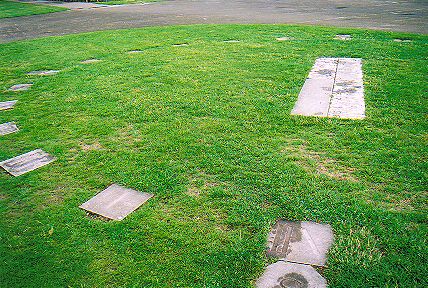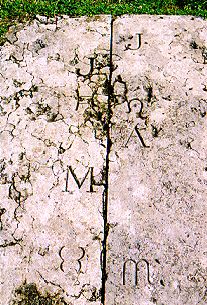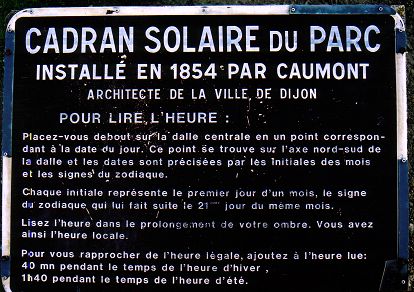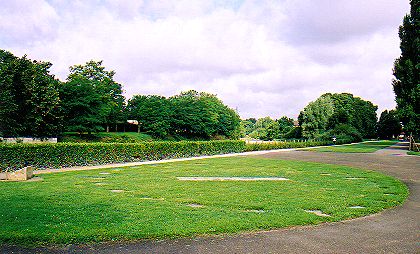
Analemmatic dials
Dijon (Côte d'Or, France)

According to Rohr, this dial is identical to the one in Brou. Which is obviously not the case. It has no closed perimeter; the hour tiles are just inserted into the green. Consequently, there are no half-hour and quarter marks. It does have the full 24 hour points, though, reading twice from I to XII local time. The tiles for VI and XII hr have adjacent tiles for the four points of the compass. Note part of the S (for Sud) on the picture above.
 This dial is even somewhat larger than its Brou ancestor: the major axis is 12.2 m (40 ft). Four slabs of stone constitute the date line, three of which are quite heavily weathered (picture at right) and one looks newer. That one really should have been busted.
This dial is even somewhat larger than its Brou ancestor: the major axis is 12.2 m (40 ft). Four slabs of stone constitute the date line, three of which are quite heavily weathered (picture at right) and one looks newer. That one really should have been busted.
The initial is placed at the first day of the month and the zodiac sign at the 21st, according to the 'instructions for use' below.

The dial has been constructed by the city's architect Caumont in a square closer to the city in 1827 already. He based himself on the Brou example. It was moved several times and ended up here in 1854. That makes it the second oldest analemmatic dial in the world. All the others still in existence date from the 20th century, as far as I know, starting with the one in Besançon (1902).

The sundial is located in the back of the Parc de La Colombière, a large park in the southern outskirts of the city. It was laid out by the famous landscape architect Le Nôtre in 1670 and borders the Ouche river, which flows behind the hedge above. The park is popular with joggers.
Location: 47.4° N, 5.0° E
Design: Caumont
Inauguration: 1854